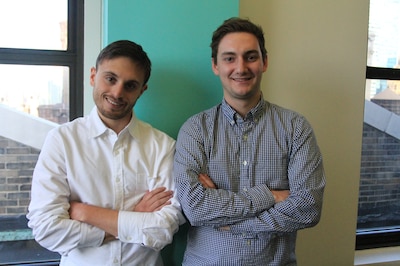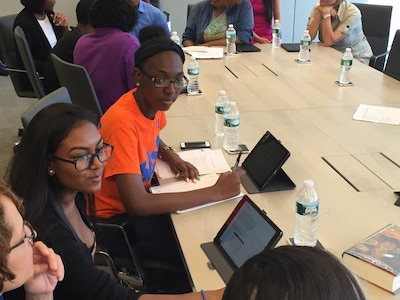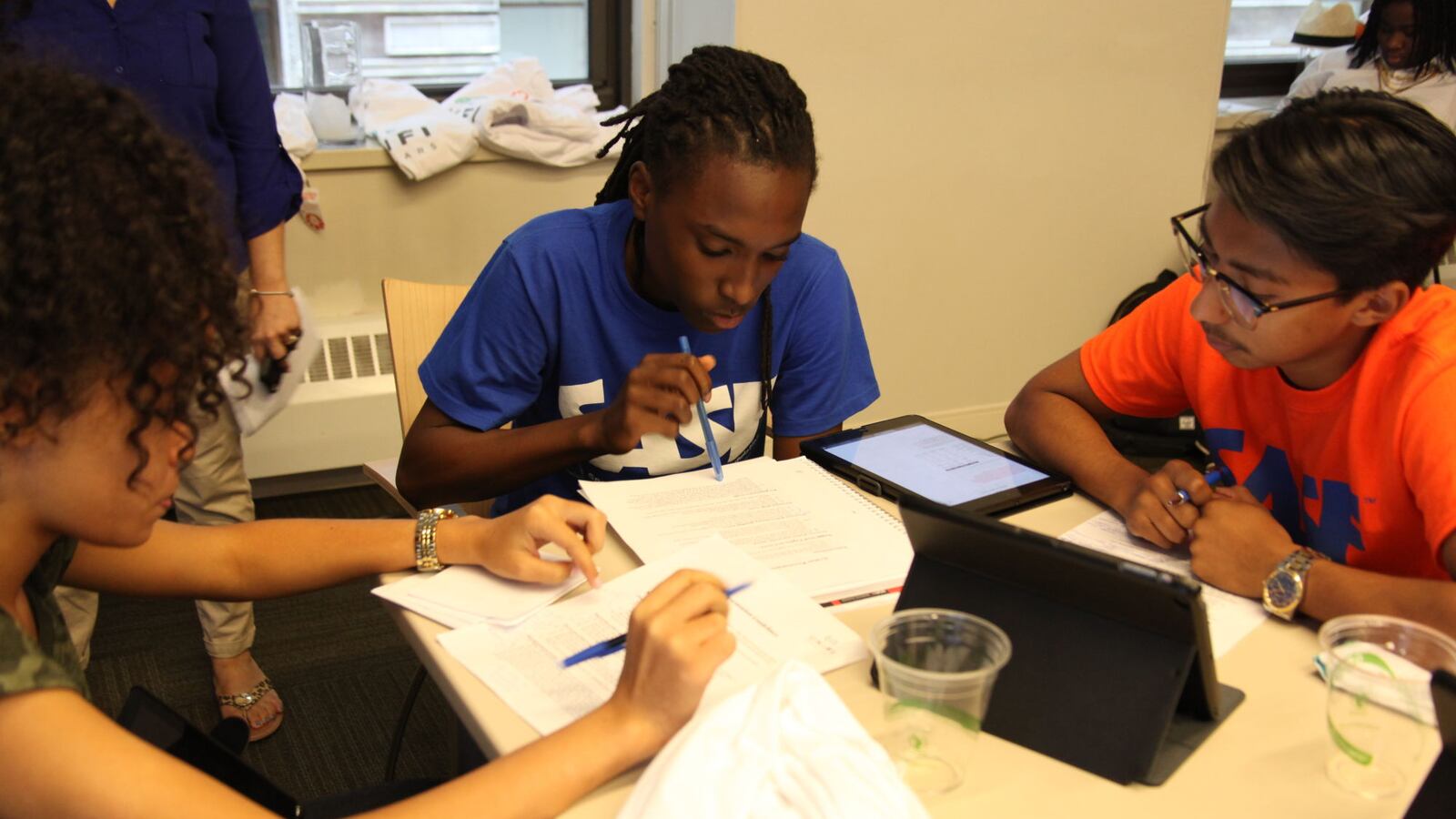Georges Clement wants to keep students from experiencing what he did six months after college graduation, when he first realized what his student loan bills looked like.
“It was far too late,” he said. “And if someone like me, with two parents with graduate degrees having gone to top tier schools, was so in the dark regarding this process, I could only imagine what students with fewer resources must be going through.”
Now, a New York City-based education startup founded by Clement and David Helene is trying to address that with a curriculum making its way into some of the city’s high schools.
UniFi Scholars, which launched in 2014, offers both a summer and after-school program for high school juniors and seniors. The goal is for students to leave with a better understanding of their financial futures, and students are tasked with creating a plan that includes a budget for the next 10 years, a list of potential colleges, and estimates for how much it might cost to attend each one.
But the co-founders also know that talented students from low-income families are too often intimidated by the sticker price of schools that would actually offer them more financial aid, and more academic support, than cheaper schools.

To help debunk those myths, guidance counselors at five city high schools — four of which are in the city’s Renewal school turnaround program (Brooklyn Collegiate, Bronx High School of Business, Flushing High School, and Richmond Hill High School) — were trained to teach the curriculum in an after-school program this fall. In the spring, the program is set to expand to a year-long program in 12 high schools partnered with the Sports and Arts in Schools Foundation.
Clement and Helene sat down with Chalkbeat to explain how they’re hoping to help high-achieving students from low-income families feel comfortable with the financial choices ahead.
How have you designed the program to address students’ needs?
Clement: Finances are inherently sort of a sensitive topic for families. A lot of the myths around what types of schools to apply to, and general questions around affordability — a lot of it is coming from students’ parents. So we try to break down those kinds of misunderstandings.
Helene: We begin by framing what a young professional budget looks like and what monthly student loan repayment could look like. When a student sees, ‘Well, that actually looks reasonable or plausible,’ there’s sort of a lightbulb moment or an ‘aha’ moment.
Clement: When you make a curriculum highly personal, [students] are so much more engaged and interested because the project that they are putting together is not just for an academic environment — the project is for their future. It’s simply giving them the tools and giving them the framework to plan for that future.
Parents want their kids to go to college and they want it to be as cheap as possible. One thing we do focus on is making sure we give students a few takeaways to go back to their parents with. That could be around what types of schools they can possibly afford, or, “In order to fill out this form that’s going to unlock all of this aid that’s going to make college affordable for me, I need this collection of documents from you.”
What do you see when you present the curriculum in these schools?
Clement: We have an activity in the very first lesson that asks students to make a drawing or an illustration of where they want to be in five years. And we’ve heard from some of our instructors that the drawing and descriptions that students give is something that they haven’t necessarily heard from students that they thought they knew so well.

Even in these schools, there is a significant number of students that are very intrinsically motivated, which is really super encouraging. We have two students from our first pilot program that we nominated for Posse scholarships and won Posse scholarships.
As much as we’d like to take credit for some of that, it’s due to these students being incredibly impressive even though those two students go to Banana Kelly and Bronx High School of Business, which are both Renewal schools.
Helene: Our students really understand the importance of opportunity. I’ve been really impressed to watch some of our kids network with adults and try to basically put into practice a lot of the concepts that we’ve talked about in class. When I was 17, I certainly was not able to do that.
How do students adjust their college application process as they go through the program?
Helene: We’ve seen horror stories where in October application lists consist of no schools and they’re starting from scratch. We would advise generally advise that students have between 10 to 12 schools that are a mix of match, reach, and safeties.
Clement: What’s interesting in the schools we’re working in is that for the most part they have a very defined system around every college-eligible senior applying for the CUNYs and SUNYs. I would like there to be a similar system where [students] have to define five private schools or just schools outside of the CUNYs and SUNYs that they have their eyes on, as well.
Helene: One of our kids just got into Syracuse University, which is great. He was a little nervous about the financial aid award, but he understands what it will likely look like on a monthly basis and has a plan for paying off his debt.
Where do you hope to see your own program in five years?
Helene: The low-income student to guidance counselor ratio is 1,000 to one, and that’s just guidance counselors. That doesn’t speak to college counselors, and there’s no such thing as financial aid counselors.
We want [UniFi] to just be something like the College Board that a student has to go through to get to college. They [would] have to come up with an accurate financial projection of what their four years will look like, or their two years, or however they’re going to spend their college experience.
Helene: Every school that we talk to feels the need and identifies the need.

